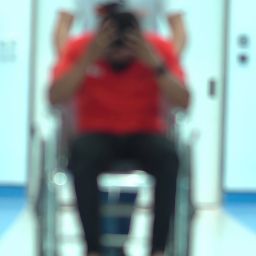In Baltimore, rehab centers lead intervention efforts against ongoing drug addiction challenges. Within this complex landscape, the concerning trend of veterinary tranquilizer abuse, known as xylazine, emerges. Authorities and rehabilitation facilities strive to address the city’s substance use disorders, emphasizing the critical need to understand the implications of xylazine use in Baltimore. The rise of xylazine underscores the importance of comprehensive addiction treatment programs tailored to address evolving drug trends. Collaborative efforts between healthcare professionals, law enforcement, and community organizations play a vital role in combating the multifaceted nature of substance abuse in Baltimore, particularly concerning xylazine use. In this article, we will shed light on the different dangers and health risks associated with the use of xylazine.
What Exactly is Xylazine?
Xylazine is a veterinary tranquilizer for horses and cattle. It slows down the animal’s central nervous system. Misused as a street drug, xylazine often combines with fentanyl or heroin, creating a dangerous and unpredictable high. Xylazine use in Baltimore has surged in recent years, contributing to a rise in overdose deaths. The drug’s ingredients are harmful for humans, causing severe sedation, respiratory depression, and even death.
Baltimore’s Battle with Xylazine
Baltimore, grappling with a myriad of socio-economic challenges, faces an uphill struggle combatting the surge in Xylazine-related incidents. The city’s vulnerable demographics are disproportionately affected, amplifying the urgency of addressing this crisis.
Health Risks and Dangers Associated With Xylazine Use in Baltimore
Respiratory Complications
Xylazine use in Baltimore can cause respiratory depression, risking shallow breathing or arrest, requiring urgent medical attention. Prolonged use may lead to fatal respiratory complications. This condition manifests as slowed breathing and insufficient oxygen intake, exacerbating the risk of respiratory arrest. Immediate medical intervention is crucial to address these life-threatening respiratory effects and mitigate the potential for fatal outcomes. Individuals engaging in xylazine use should be aware of these serious health risks and seek help promptly if experiencing respiratory distress.
Heart Problems
The use of Xylazine elevates the risk of cardiac issues such as arrhythmias and heart failure, potentially life-threatening. The cardiovascular system suffers from xylazine’s toxicity, leading to heart rate and blood pressure fluctuations. These unchecked fluctuations can escalate to cardiac arrhythmias or arrest, highlighting the severity of xylazine abuse. Individuals should be aware of these dangers and seek medical assistance promptly if experiencing symptoms of cardiac distress. Comprehensive interventions are essential to address the cardiovascular risks associated with xylazine abuse and prevent adverse outcomes.
Neurological Impairment
The impact of xylazine on the central nervous system extends beyond initial symptoms to long-term cognitive impairments. Prolonged use may lead to chronic neurological issues, including memory loss and difficulty concentrating. Additionally, xylazine misuse can exacerbate existing mental health conditions such as depression and anxiety. Individuals engaging in xylazine abuse may experience profound changes in mood and behavior, further complicating their overall well-being. Understanding the neurological consequences of xylazine misuse is crucial for developing comprehensive interventions to address its harmful effects on individuals in Baltimore and beyond.
Renal and Hepatic Dysfunction
Prolonged xylazine abuse damages renal and hepatic tissues, impairing vital functions. Renal failure and hepatic impairment challenge metabolic equilibrium, worsening health. Addiction treatment in Baltimore addresses substance use disorder, including the use of xylazine. Rehab centers in Baltimore offer support to individuals struggling with xylazine abuse. Comprehensive interventions are essential to mitigate the damaging effects of xylazine on renal and hepatic systems. Understanding these consequences is crucial for developing effective treatment strategies.
Social Implications of Xylazine Abuse
Xylazine abuse in Baltimore results in social repercussions, including estrangement from family and job loss. Users face stigma, leading to social marginalization and limited access to healthcare. Substance use disorder treatments in Baltimore’s rehab centers aim to address these challenges. Accessible addiction treatment in Baltimore is crucial for supporting individuals facing Xylazine-related social issues. By providing comprehensive care, rehab centers can help users reintegrate into society and regain stability. Additionally, the stigma surrounding Xylazine use can lead to isolation and hinder the formation of supportive social networks. Understanding and addressing these social challenges is integral to effective addiction treatment in Baltimore.
Dangers of Mixing Xylazine with Other Substances
Mixing xylazine with other substances poses severe dangers, increasing the risk of overdose and exacerbating respiratory depression. The potentiation of sedative effects can lead to a heightened risk of overdose, especially among individuals with substance use disorder (SUD). Xylazine’s interaction with other drugs can also enhance their toxicity, compounding health risks for users. This practice further complicates addiction treatment in Baltimore, as individuals may require specialized care to address the complexities of polysubstance abuse. Additionally, the combination of xylazine with other substances can potentiate adverse effects, such as cardiovascular complications and central nervous system depression.
The consequences of mixing xylazine with other drugs underscore the urgent need for comprehensive intervention strategies within Baltimore’s healthcare system. By addressing polysubstance abuse in addiction treatment programs, rehab centers can mitigate the harmful effects and improve outcomes for individuals struggling with xylazine use and other substance dependencies. Understanding the dangers associated with mixing xylazine with other substances is essential for healthcare professionals and policymakers to develop effective harm reduction initiatives and support services for those affected by polysubstance abuse in Baltimore.
Treatment Options for Xylazine Addiction in Baltimore
In Baltimore, rehab centers offer various treatment options for xylazine addiction, including medical detoxification to manage withdrawal symptoms under supervision. Behavioral therapies like cognitive-behavioral therapy (CBT) and motivational interviewing (MI) address underlying issues contributing to substance use disorder (SUD). Baltimore rehab centers emphasize the importance of personalized treatment plans tailored to individuals’ needs and circumstances. Alongside therapy, peer support groups like Narcotics Anonymous (NA) provide crucial support and encouragement during recovery. These comprehensive approaches aim to address not only the physical aspects of addiction but also the psychological and social factors driving xylazine use in Baltimore. By combining medical detoxification with behavioral therapies and peer support, addiction treatment in Baltimore rehab centers strives to empower individuals to achieve long-term recovery from xylazine addiction and regain control of their lives.
Seeking Professional Help?
If you or someone you know is struggling with Xylazine abuse, it’s essential to seek help and support from healthcare professionals and addiction specialists like Seventy Times Seven Wellness Mission Baltimore.
Conclusion
In conclusion, the health risks and dangers associated with Xylazine use in Baltimore are significant and multifaceted, extending beyond individual users to impact the broader community. The pervasive infiltration of Xylazine poses an imminent threat to public health, accentuating the imperative of concerted efforts to curb its proliferation. Addressing this public health crisis requires a collective response from healthcare professionals, policymakers, law enforcement agencies, and community members alike. Through heightened awareness, proactive intervention, and steadfast resolve, Baltimore can stem the tide of Xylazine-related morbidity and mortality, ushering in a brighter, healthier future for all its inhabitants.













